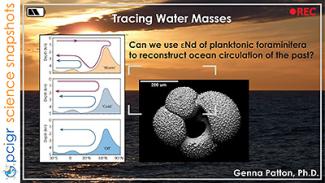PCIGR provides analytical services that can be applied to research in biogeochemical cycles and climate.
Research on the marine biogeochemical cycle of carbon, which dictates the level of atmospheric CO2, has direct implications for societal concerns about the current climate emergency.
Large uncertainties in ocean and climate model predictions still exist. Improving understanding of these systems is crucial so that researchers can underpin past climate, model future climate conditions, and develop solutions to mitigate the rise of atmospheric CO2.
Examples of analytical data used in research for biogeochemical cycles and climate include:
- Iron (Fe) and other bioactive metals (e.g., Cu, Cd), for understanding cellular requirements of, and uptake by, marine phytoplankton to constrain the cycling of trace elements in seawater.
- Isotopes of Fe, Si and Pb in seawater, measured to study their sources and biological cycling in the ocean.
- Major and trace elements, and 230Th, He, O, N and C isotopes in marine sediments, measured to establish past efficiency of the ocean to naturally sequester atmospheric CO2.
- Methods developed and refined for analyzing isotopic tracers (Si, Cd, Mo, Cu, Zn, Fe) to evaluate past changes in ocean productivity, nutrient cycling, redox conditions and anthropogenic impact.
Click on the Science Snapshots below to see details of how analyses performed by PCIGR have benefitted research in biogeochemical cycles and climate.


